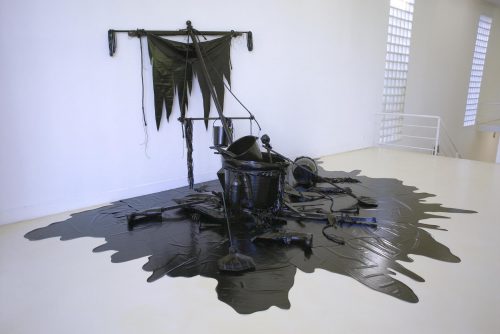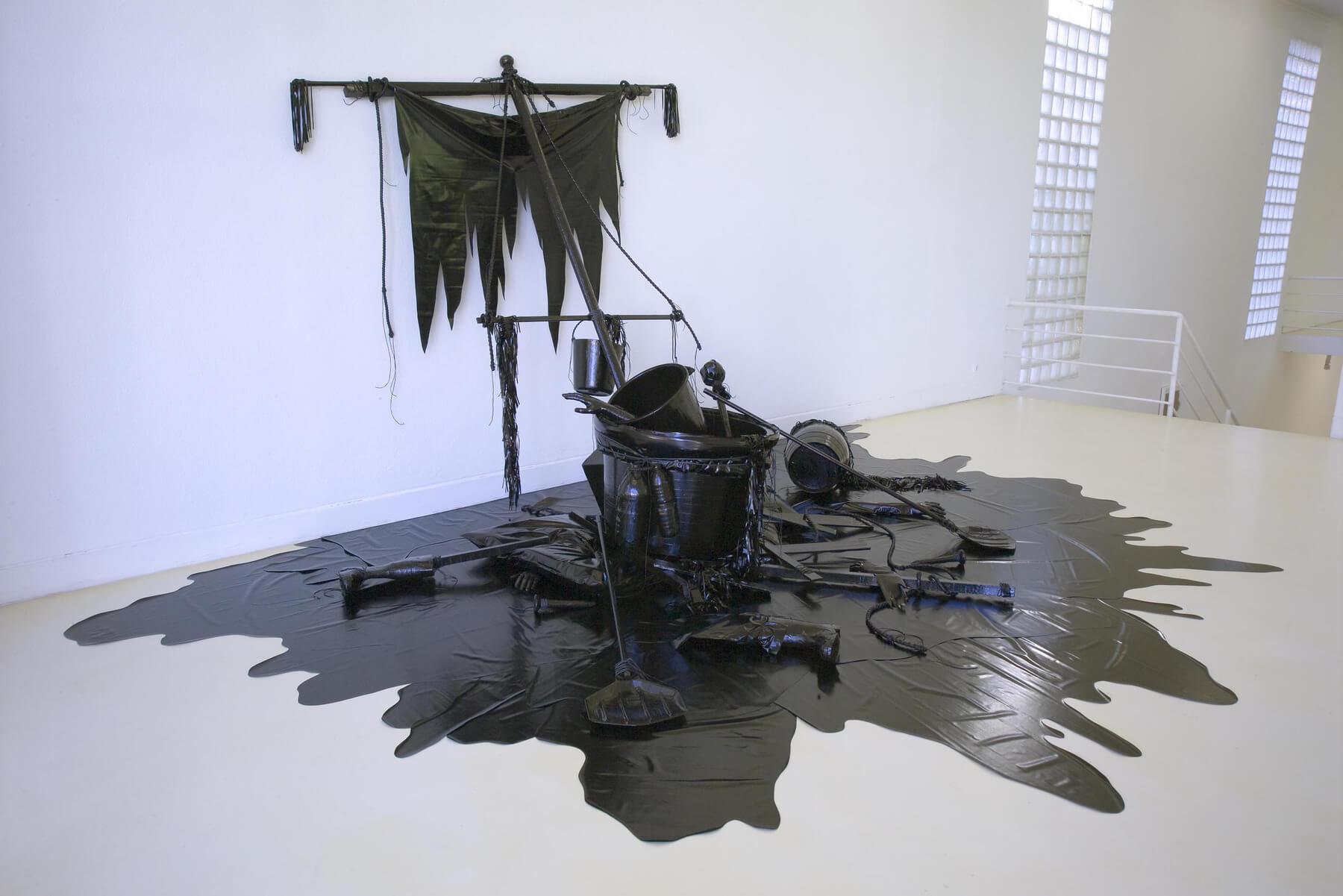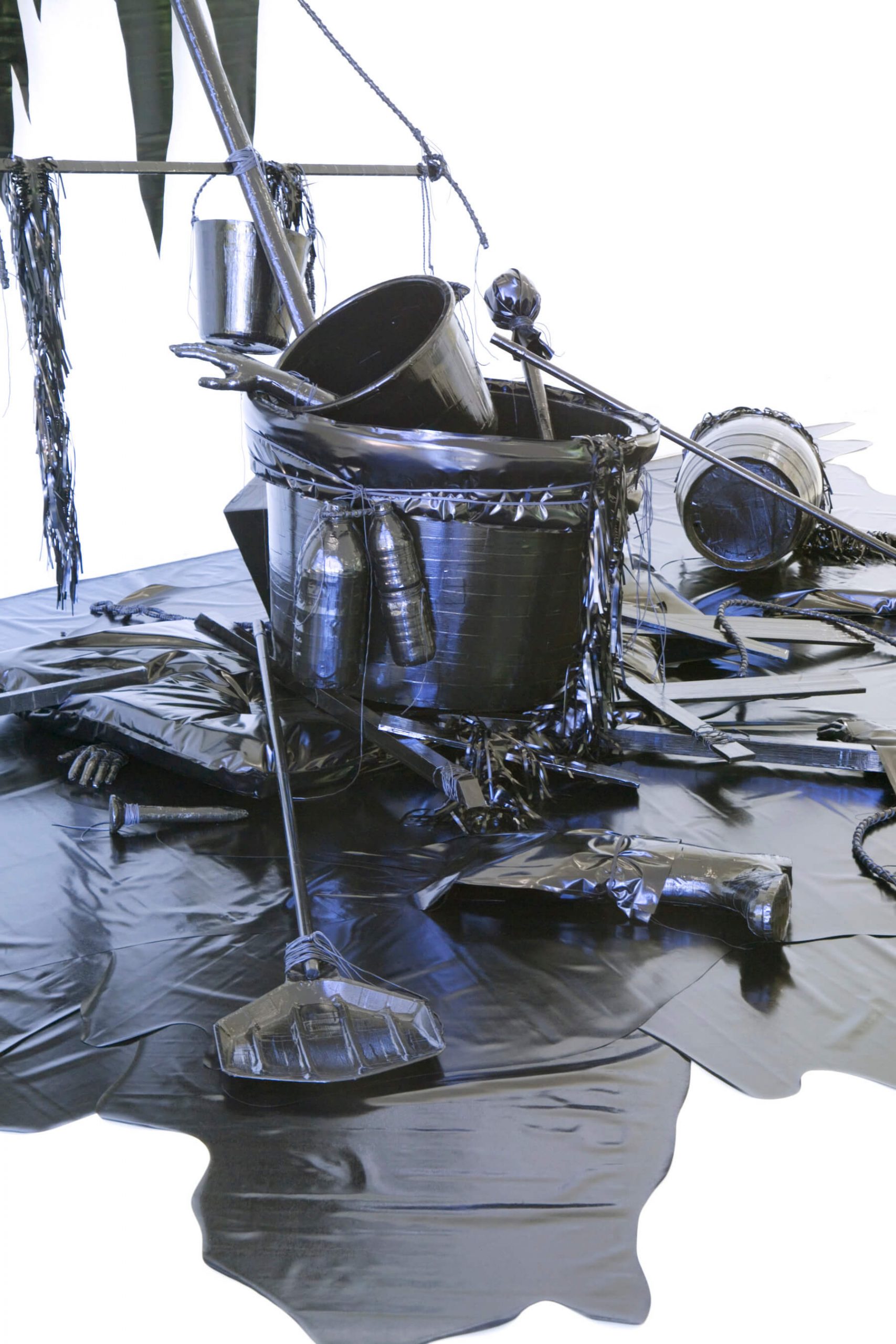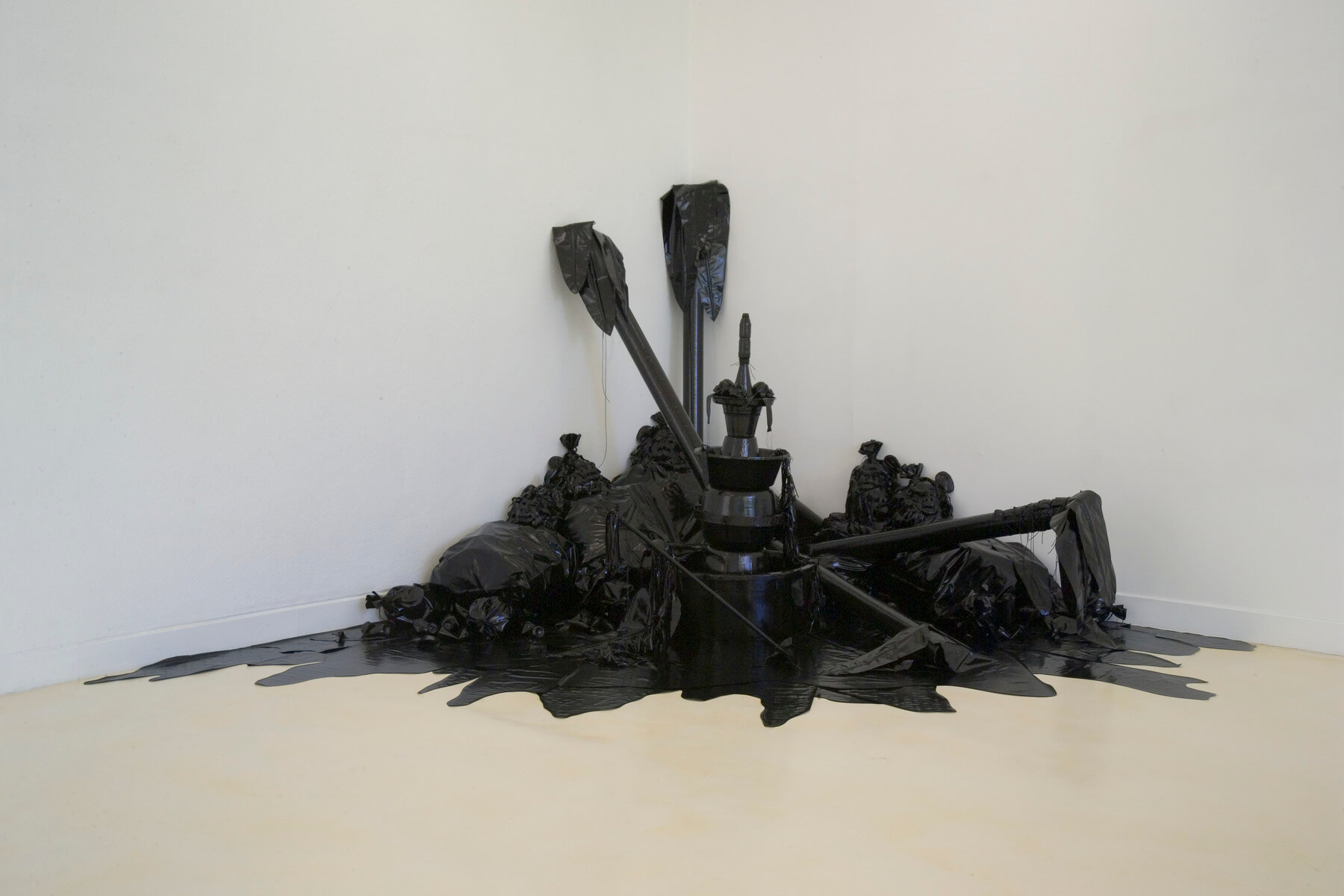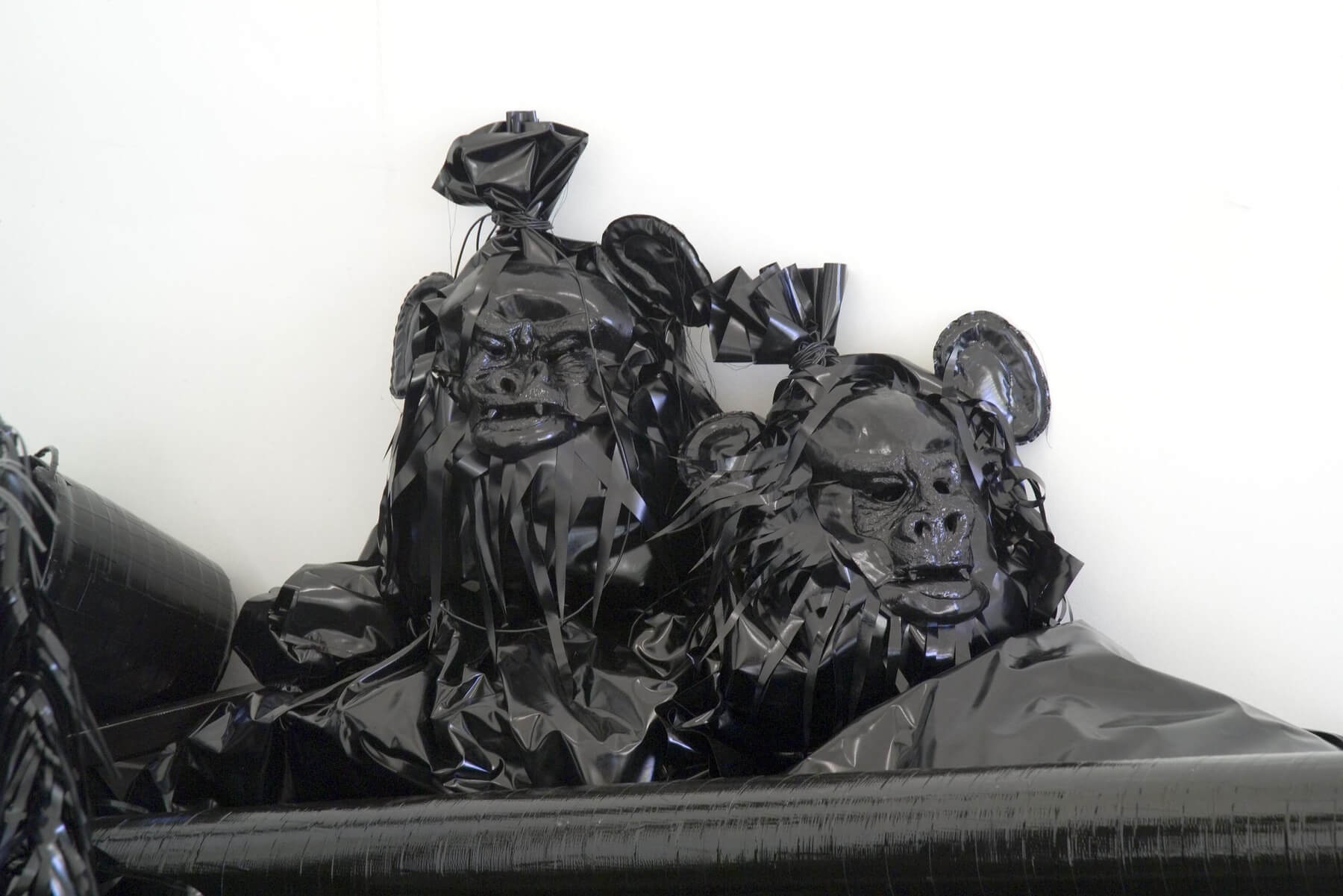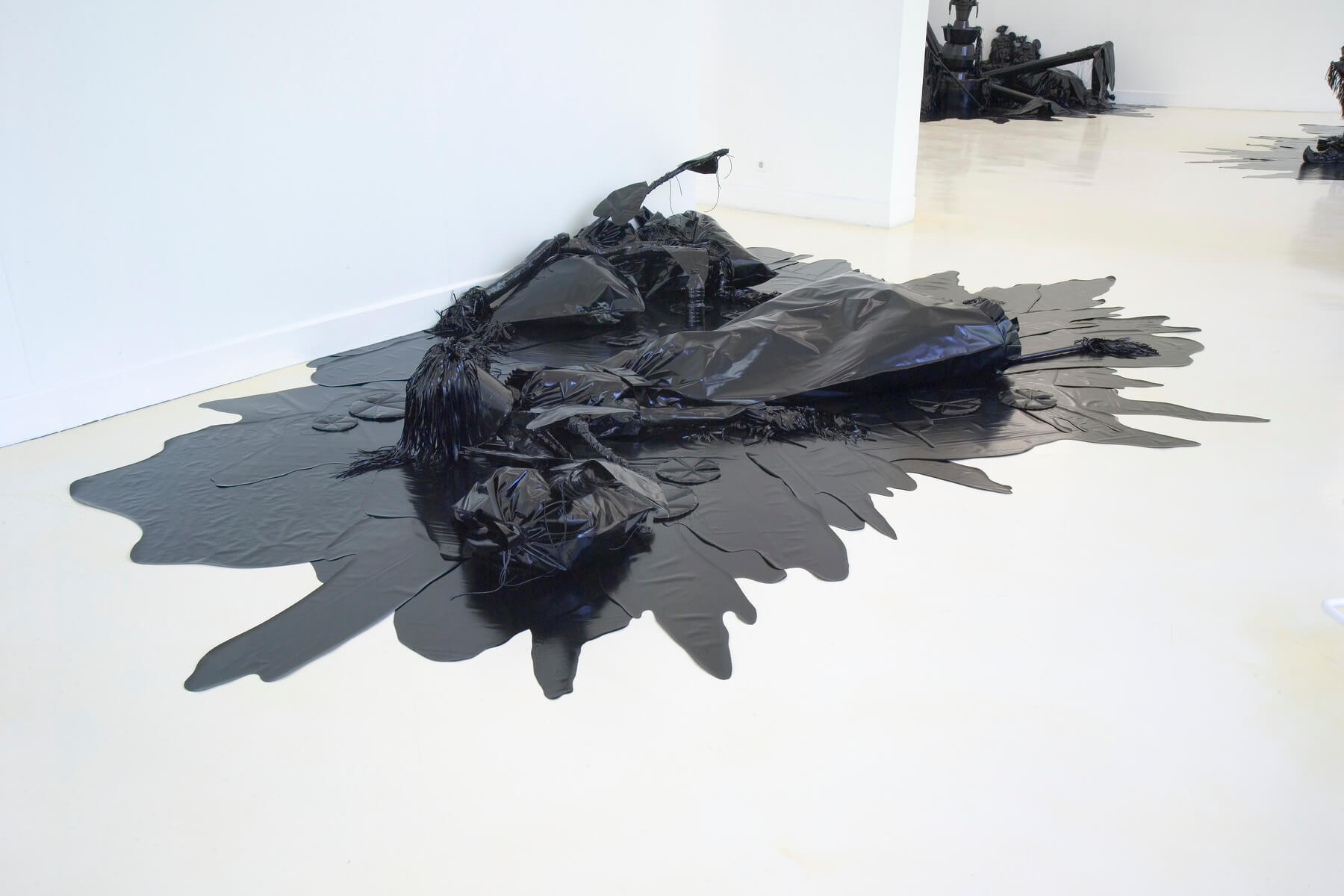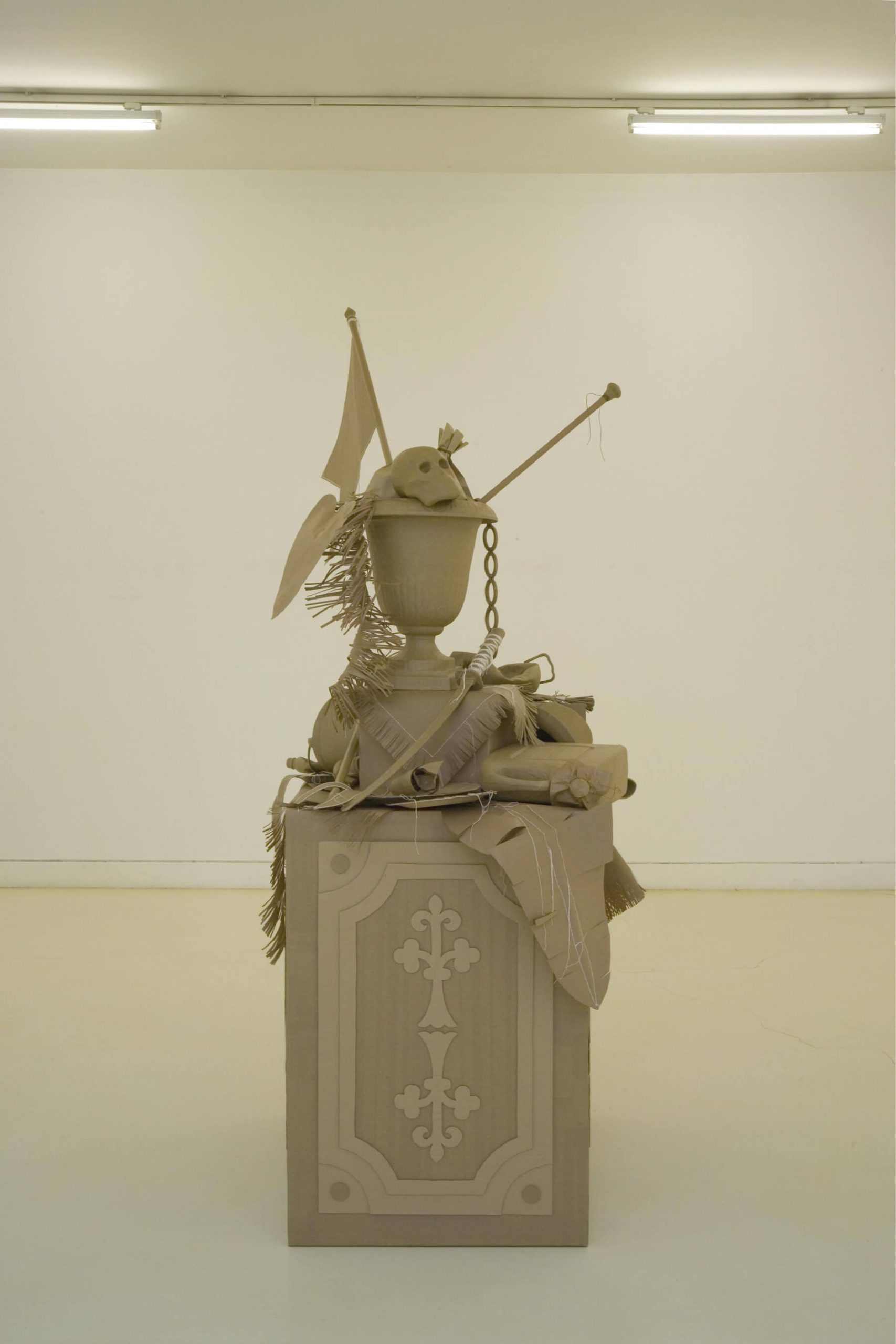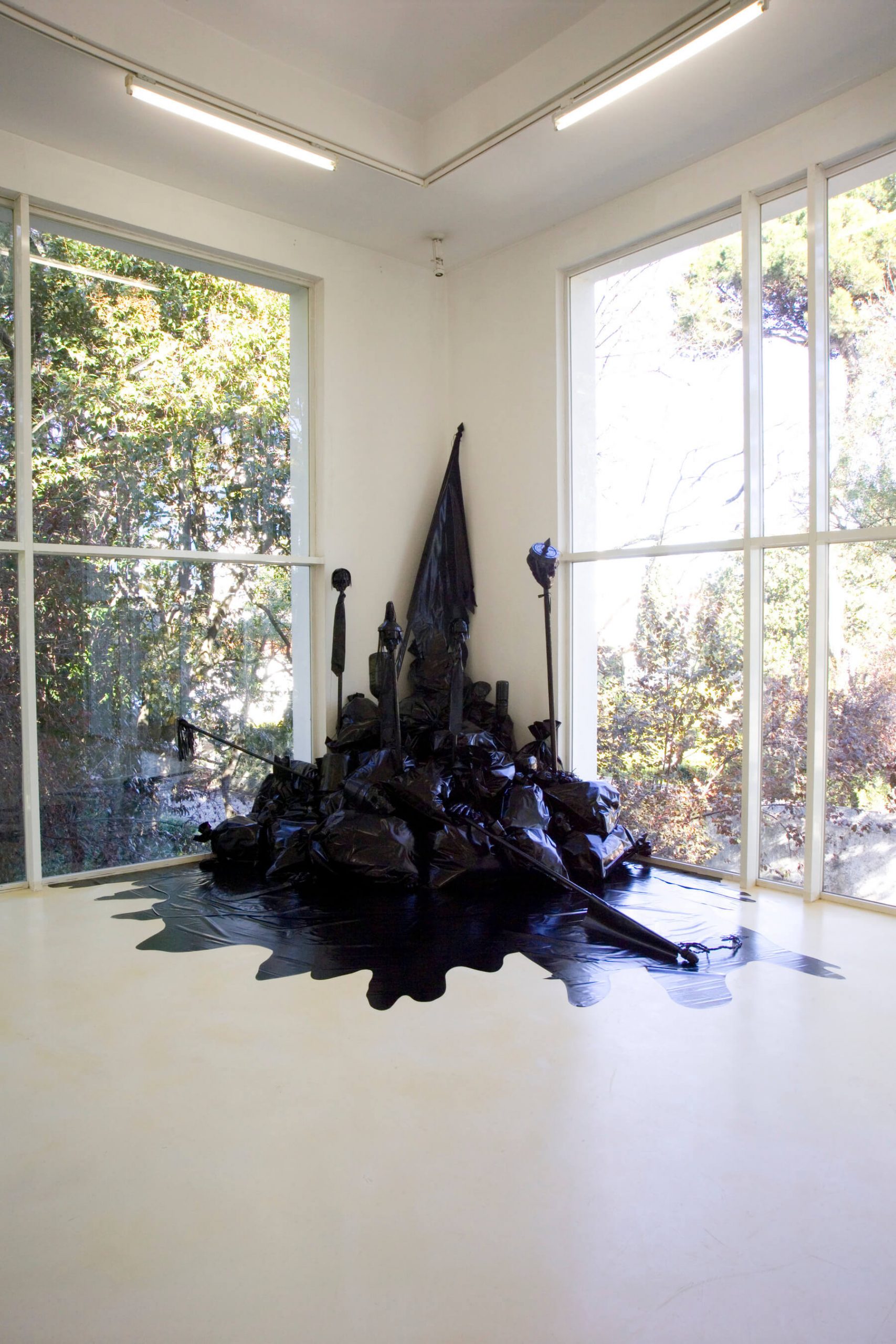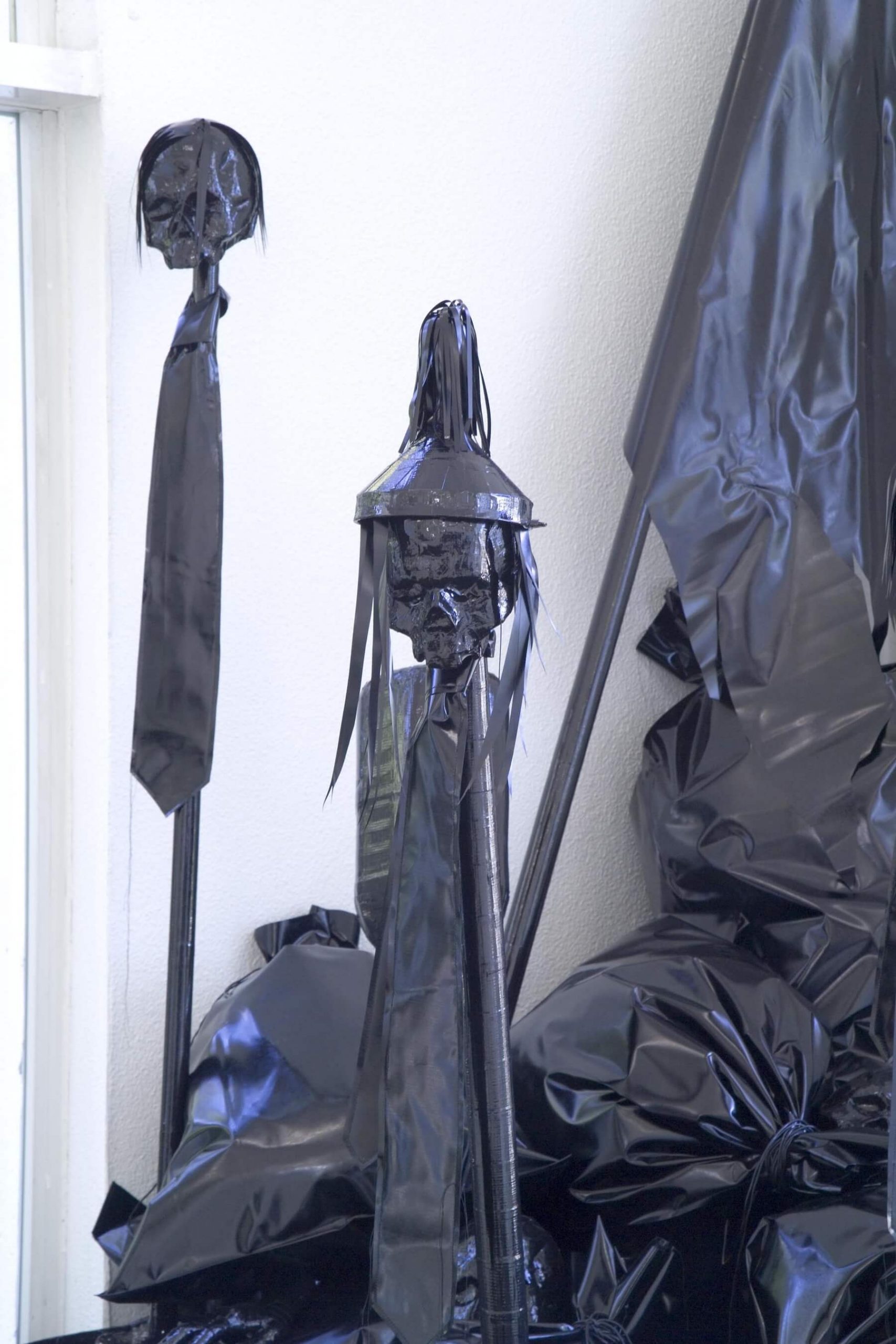– 13.01.2008
The body of work that Pedro Valdez Cardoso (born in Lisbon, in 1974) has been assembling is posited within the discussions on identity construction, which can be embodied through several channels, whether sexual, national, or historical. Therefore, his work assumes quite a political weight. Or at least there is a wish to approach his work to some degree of transfiguring its aesthetical action field into an arena of discussion and reflection of a questioning that goes well beyond pure aesthetics. Taking this in account, one may conclude that Pedro Valdez Cardoso’s artistic strategies are devised in two levels: that of visual discourse and that of conceptual discourse. Visually speaking, his works have been gradually become more prosperous where their consistency and even apparatus are concerned. Following the appropriation principle, they stumble upon objects from the “profane” world. His dexterity or skills, traits found in the virtually gone artisans, are paramount in his work process, although a subsequent and crucial camouflage is also at stake. This covering up, however, is not only assumed but also made as evident as possible, despite the fact that the memory of the appropriated object is transferred to the new one. Its shape is kept, but its “covering” or skin, as it were, is substituted, something which allows for the recognition of the original objects, but where they do not translate a certain meaning anymore, a meaning that is generally consensual within our society; they open up rather to new readings and new meanings. The duplicity strategy that this skin-changing allows for is carried over to other concepts that are related to the conceptual strategies of his artistic interventions: such as the dichotomies visibility/invisibility, ephemeral/permanent, and life/death.
In this exhibition, entitled CRUDE (lit. Crude), Pedro Valdez Cardoso presents a set of works that have never been shown before. Apparently, these works seem to be disconnected, but they are actually bound by a concept: that of erasing or annulling colour, and its subsequent ambiguity, where meaning is concerned. There are two pivotal movements at the root of the creation of this set. On the one hand, the appropriation/tampered reconstituting of central works from the History of Art, and on the other hand, the conceptual eliciting produced by two books: Joseph Conrad’s Heart of Darkness and Davis Grubb’s The Night of the Hunter.
Valdez Cardoso comments on the fact that artworks such as Géricault The Raft of the Medusa, Delacroix’s Liberty Leading the People, and even Millais’ Ophelia are brimming with an intense symbolic charge, more often than not related to some sort of social criticism. After a certain fashion, the artist aims to return to the works of art such a dimension, nowadays regularly diminished in its value, at the same time that he adds to it his own reflections. The very selection of the works of art he has made takes into consideration the possibility of thinking about theories on the conception of evil, of totalitarian dynamics and the human condition as presented by the philosophical thinking of Hannah Arendt. Take, for example, his Raft of the Medusa appropriation. If the original painting not only retells in an almost journalistic manner a terrible yet true event but also produces a social indictment on cannibalistic practices, the new Raft plays with those original concepts and adds to them its own reflection on the flight that many illegal immigrants do today from their countries, in search of new worlds, which will end by cannibalizing them.
Despite the conceptual unity, this exhibition is apparently segmented in two distinct moments, at one time both separated from one another and uniform where colour is concerned: moments that correspond to the ground and the first floors. Valdez Cardoso puts the very specificities of the space in question, that of the Pavilhão Branco (“White Pavillion”) of the City’s Museum, and presents in the ground floor an installation that elicits the notions of mirrors and duplicity. The disposition of the works in this floor is done symmetrically. Two monuments – or, in accordance to the artist’s own words, “anti-monuments” – are set in the centre of the two rooms. Placed over a haughty plinth one finds a collection of objects that seem to have been torn off from other statues. A monument to insignificance. However, each one of the elements that comprises the sculpture wields in itself a symbolic charge that has been attributed to it over the many centuries of its inclusion in public sculptures: elements such as trophies, swords, skulls and flags. Though here deprived of their meaning. Within this new edifice, their symbolism of power is brought down to the fragility of the objects in themselves, all re-constructed from cardboard. The choice of this specific material is related to the fact that paper (on which cardboard is based) is the vehicle through which the discourses on the so-called monuments were carried. The duplication of discourses through the duplication, albeit illusory, of the words can be interpreted here as a commentary to the rhetorical dimension, quite often hollow, of the tradition of sculpture.
The major installation that the viewer encounters on the first floor, on the other hand, just as the abovementioned sculptures that refer to pre-existing artworks, is entirely constructed with black plastic bags and duct tape. Both materials are petroleum derived products, and so it seems that this whole mass is covered with a thick layer of crude oil. This allusion to crude, that is, non-refined oil, is also related to the fact that this natural product is a fossil element, which means that one must dig into the earth in order to make it accessible. And it is precisely that movement of digging into the earth, of unearthing the several superficial layers that is the interesting thing for Valdez Cardoso. That unearthing, that deliverance allows the artist to concentrate altogether on the dimension of meaning, conceptualization and criticism. The erasing of the specific characteristics of the sculpture’s individual elements puts these works under the austere action of meaning, quite similar to the structures that commanded the production of the quoted works.
The manner through which the artist relates himself to sculpture brings into question both the boundaries and the foundations of the very discipline’s structure. Therefore, it places Valdez Cardoso’s work in what Rosalind Krauss defined as ‘Sculpture in the Expanded Field’.
-Filipa Oliveira
– 13.01.2008

